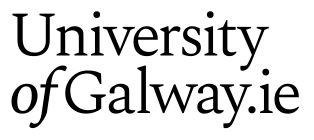
- This event has passed.
Dr Niamh Thornton, University of Ulster, Coleraine – Macho, Macho Men (and Women): MarÌ_a F̩lix and Emilio ‘el indio’ FernÌÁndez in Mexican Films of the Revolution
March 21, 2013 @ 2:00 pm
Event Navigation
Macho, Macho Men (and Women): MarÌ_a F̩lix and Emilio ‰Û÷el indio‰۪ FernÌÁndez in Mexican Films of the Revolution
Dr Niamh Thornton, University of Ulster, Coleraine
Mexican film has repeatedly returned to the bellicose period of the Revolution (1910-20) as a source of inspiration for both plot and setting. The archetypal image of the Mexican macho can be found in the display, performances and wardrobe employed in these films, which appears, at first glance to be rigid and reactionary. Yet, they reveal an ever-increasing anxiety about men and women‰۪s roles that are worked through in a complex interplay between star text and the films‰۪ narrative, visual and audio cues, and, consequently frequently challenge convention.
Emilio ‰Û÷el indio‰۪ FernÌÁndez directed and acted in some of these films of the Revolution, whilst Maria F̩lix often had a starring role. Their films are of varying quality and have received mixed critical reception.Some, such as, Flor Silvestre (Emilio ‰Û÷el indio‰۪ FernÌÁndez, 1943) and Enamorada (Emilio ‰Û÷el indio‰۪ FernÌÁndez, 1946) are among the most celebrated films of the so-called Golden Age (1930-50).Others have been critically denigrated, such as La Cucuracha (Ismael RodrÌ_guez, 1958), Juana Gallo (Miguel ZacarÌ_as, 1960), and La Bandida (Roberto RodrÌ_guez, 1962).However, all of these engage with ideas about gender that are complicated by the often controversial personal lives of both FernÌÁndez and F̩lix, their performances on screen and the evolving nature of the public discourse about gender roles. In these films, masculinity and femininity has defined rules, which are often referred to in the plot and dialogue, yet these are transgressed and problematized repeatedly.
In order to illustrate this evolution and explore the density of the issues alluded to, this presentation will consider two contrasting films Enamorada and La Cucuracha, and consider how the attempts to allegorise gender roles is often countered by narrative, audio-visual techniques, performances and the star texts of both of these actors.

